By Lawrence Haywood, Mar 13, 2025
Given the vast instability that Vietnam went through during most of the 20th century, it will come as no surprise that Saigon is a veritable mecca of history, both modern and ancient, now that it has emerged as prosperous in the 21st century. Through warring hill tribes, the shifting of dynasties as well as foreign occupation from China, France, Japan, America, and others, Saigon has become synonymous with war. Such a dire association does not affect the life of its residents today, however, as smiles greet foreign visitors and the modern history of their country is openly discussed.
Subsequently, there are a huge amount of historical things to do in Saigon that span from its most ancient beginnings to its more modern turbulence. At Incredible Asia Journeys, we’ve picked the TOP 8 Ho Chi Minh city historical sites.
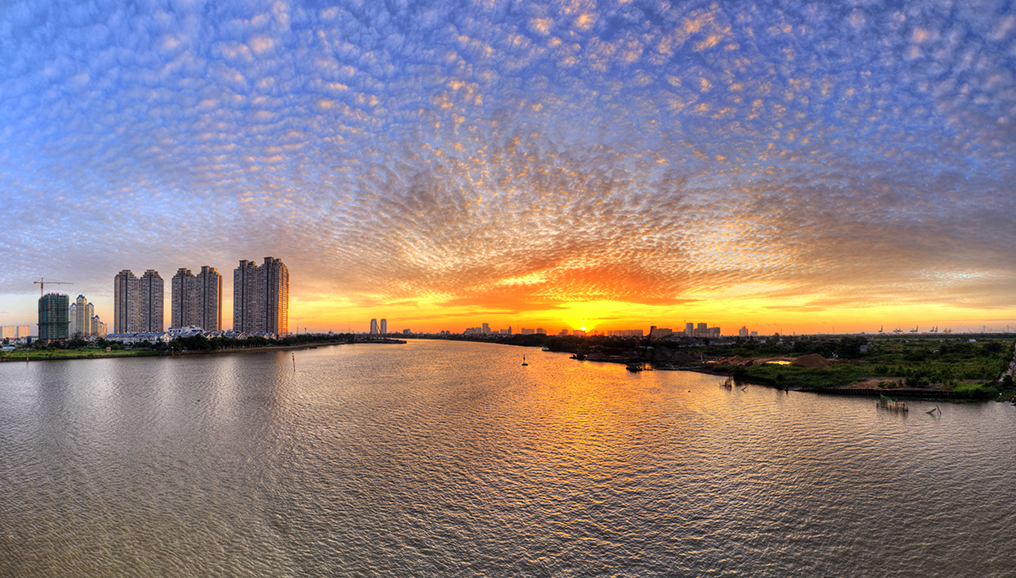
Ho Chi Minh City in the sunset
The dramatic finale of the American War took place on the roof of the Reunification Palace, then called the Independence Palace for Vietnam’s success against the French colonialists, newly named in 1975 for the North Vietnamese success against the Americans and the South. TV channels around the world televised the Fall of Saigon firsthand, as a tank crashed through the gates of the palace and a lone soldier claimed the South for Ho Chi Minh, after whom Saigon became named.
The Reunification Palace is one of the top attractions in Saigon for history buffs, as it has been the site of such sparring and changeover throughout its past. The rather drab architecture is compensated for inside through many displays and exhibitions, as well as the impressive underground bunker and tunnel system that hid the president of South Vietnam. Information around the palace provides useful knowledge on the contested location and its French, Japanese, American, and eventual Vietnamese ownership.

Reunification Palace in Ho Chi Minh City
If the Reunification Palace in Ho Chi Minh City heralded the end of the war, the War Remnants Museum heralded the start of Vietnam’s prosperous post-war age - and they took no time in building it to admonish the Americans. Just about four months after the Fall of Saigon, the ‘Exhibition House for U.S and Puppet Crimes’ was established, gradually easing off on the Americans in 1990 by renaming it the ‘Exhibition House for Crimes of War and Aggression’ and dropping the passive aggressiveness entirely in 1995 with the ‘War Remnants Museum’.
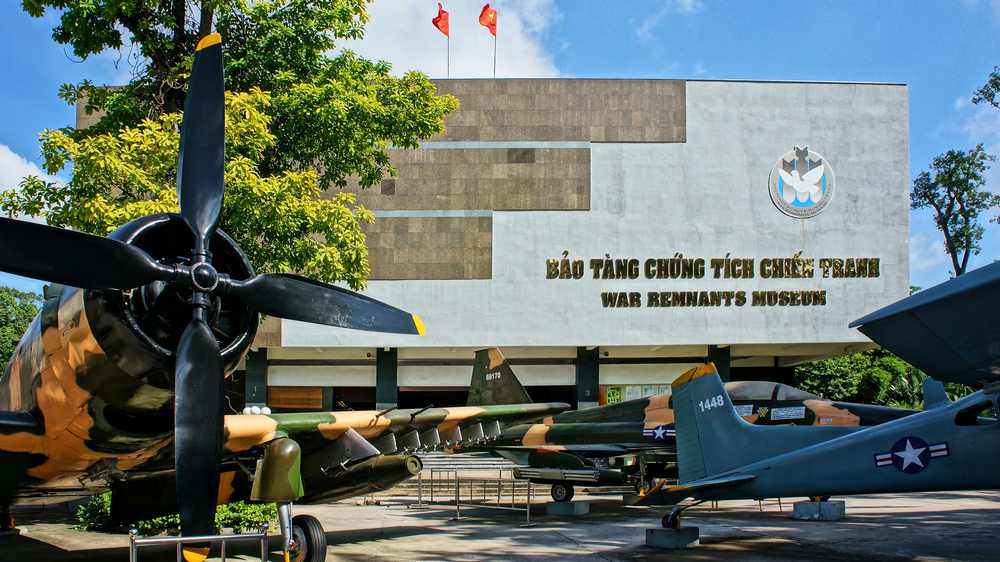
War Remnants Museum
However, inside remains a strong current of anti-American mentality, as American and South Vietnamese war crimes are brutally highlighted, while the North Vietnamese Army and Viet Cong get off pretty lightly. While definitely one of the best historical things to do in Saigon, information on the various crimes committed, should be taken with a pinch of salt. There are many personal accounts of the war as well as of the appalling effects of Agent Orange in Vietnam’s jungle villages, for which America is still paying compensation.
Stepping further back in time to the French Colonial period, two of Saigon’s historical things to see lie side-by-side in the downtown area of the city. The Notre Dame Cathedral is the most impressive of the two, standing as a testament to the push of Christianity in a largely Buddhist or non-religious country. It was completed in 1880 and took 17 years to finish due to all of the materials requiring delivery from France. It is a great place to see the history and influence of the French in Saigon, which was the capital of their Indochina Empire.
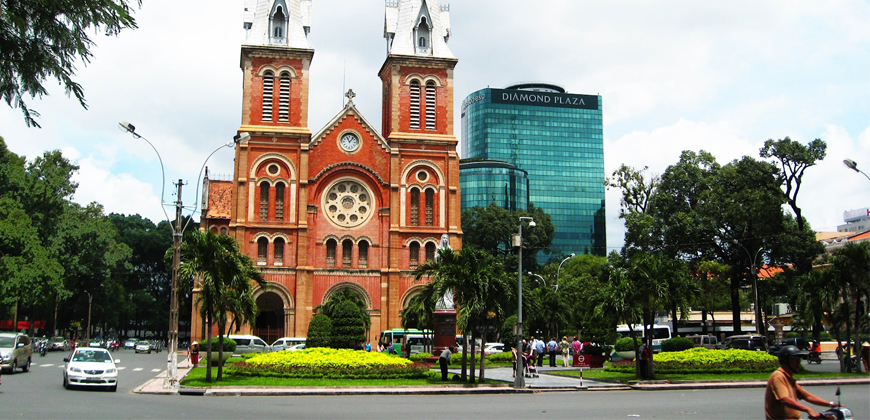
Notre Dame Cathedral
Across the square in front of the cathedral lies the Saigon Central Post Office, another French creation exhibiting some fantastic European architecture. This grand building was finished in 1891 and features both huge, colonial archways and the bright yellow of the Vietnamese color scheme outside. Maps and other such documents provide a good grounding for history buffs, but tours generally don’t take more than ten minutes, as non-post-related options are slim inside. The best time to visit places in Ho Chi Minh City is from late November to mid-April.
If the garish yellow of the Saigon Central post office appeals to your design sensibilities then you should head directly to the Museum of Vietnamese History, which sports the same vivid color and colonial architecture that had become a staple of French construction by the time this building was finished in 1929. The museum showcases history from a time that very few people know about, from before the televised fighting put Vietnam on the map. There was still fighting, however, as many ethnic groups including the Khmer of Cambodia and the more central Vietnamese Cham fought between each other and others for control over the south of the country, leaving behind over 30,000 artefacts that tell the fascinating story of Vietnam long before its two most famous wars.

Museum of Vietnamese History
A lively, bustling Chinatown in its day, and not too different now. Cho Lon lies in the city’s inner-west, representing the ancient Chinese culture through its many immigrants who moved here during the late 17th century. At that time, Cho Lon was a separate entity from Saigon, and a huge hub for trading (Cho Lon is the Anglicised version of Chợ Lớn– meaning ‘big market’ in Vietnamese), which combined with its neighbor in a city called Saigon-Cho Lon, before it was dropped completely and became another district of the sprawling metropolis.

Cho Lon Ho Chi Minh City
A walk around Cho Lon today is a great thing to do in Saigon for those interested in oriental history. Many pagodas, assembly halls, and markets still stand from hundreds of years ago, each bearing distinctive Chinese architecture. Take time to explore Thien Hau Pagoda, a colourful and ornamental dedication to the Chinese Sea Goddess, Mazu. Ong Bon Pagoda and On Lang Assembly Hall are historically interesting places to visit, but it’s the markets that gave Cholon its name, so Binh Tay and Soai Kinh Lam markets are most certainly worth a visit for the historical enthusiast in Saigon.
Check out our best tour to Explore Saigon:
Though it is the Vietnamese soldiers who are known throughout the world for the fierce and effective defence of their homeland, there is a special admiration held in the Antipodes for the ANZAC (Australia and New Zealand Army Corps) forces who stood firm against an onslaught of Vietnamese while they were outnumbered around 20 to 1. Long Tan lies about 100km southeast of Saigon in Ba Ria –Vung Tau Province and is the sight of the most heroic, yet most costly battle of the ANZAC.
Several of the important historical places in Ho Chi Minh City still remain, including Nui Dat Base, Horshoe Hill and the Discourtesy Rubber Plantation, where the Long Tan Cross Memorial stands as only one of two foreign commemorations allowed throughout the entire country (the other built by the French at Dien Bien Phu). Incredible Asia Journeys provides a daytrip from Ho Chi Minh City to Long Tan Battlefield including a knowledgeable guide and all transportation and food.
Click on the link to see the Long Tan - Nui Dat Day Tour from Ho Chi Minh City.
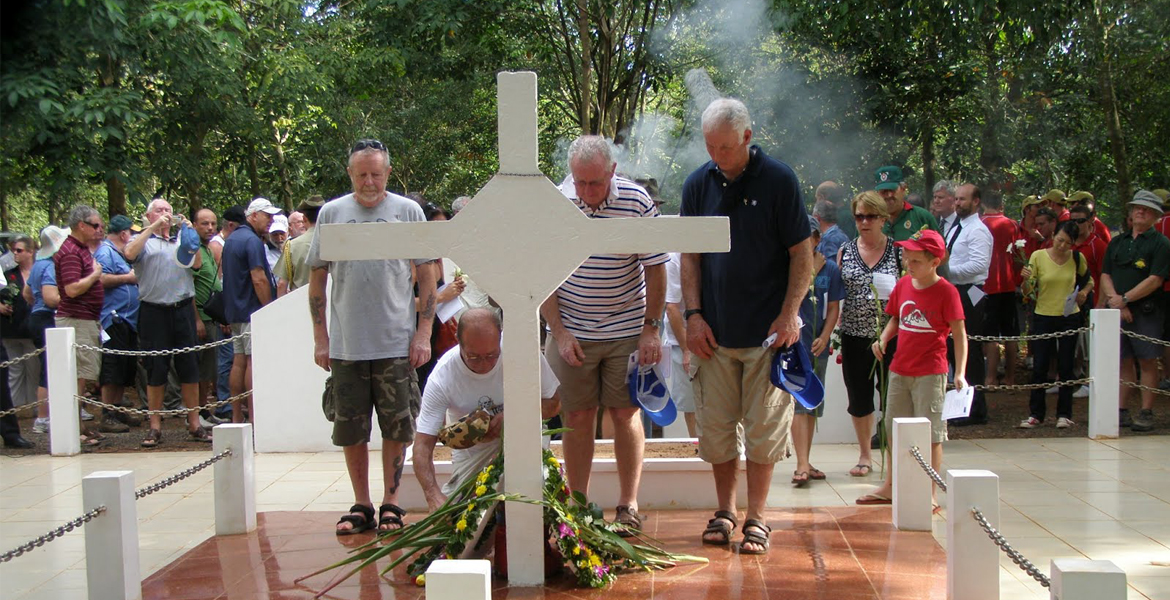
Long Tan Battlefield
One of the most famous historical attractions of Saigon, the Cu Chi Tunnels lie about 50km to the northeast of the city and are a reminder of how close the Viet Cong were to the capital of the South while conducting their secret operations underground. Aside from its location, the system itself is an unbelievable labyrinth of tunnels dug below the tracks of tanks that rolled ahead, where the Viet Cong could live, store weapons, treat the wounded and scheme for the eventual demise of their enemies.
The Cu Chi Tunnels are the epitome of guerilla warfare at its finest. The conditions that the Vietnamese withstood underneath the earth for days at a time can be partially felt by climbing into the tunnels and experiencing it first-hand. Bear in mind, however, that the tunnels have been expanded by 30% and that venomous animals have been thoroughly removed for the comfort of foreign visitors, so conditions would have been even more horrendous than can be experienced today. Incredible Asia Journeys has several day trips from Ho Chi Minh City to the Cu Chi Tunnels, all of which you can find on our website.
Check our best tours to Cu Chi Tunnels:
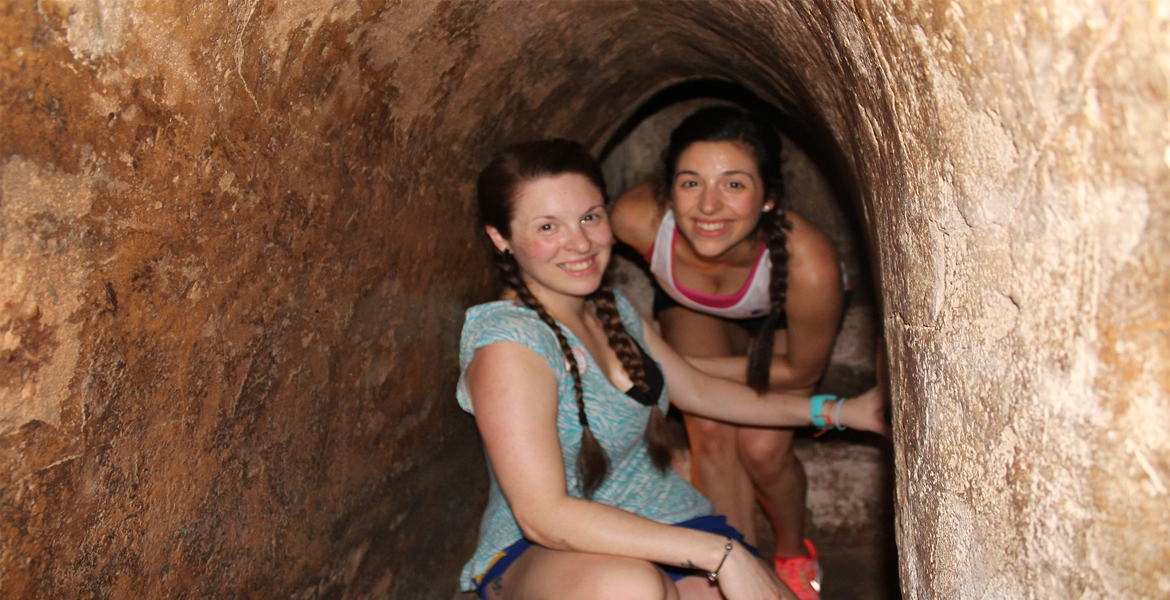
Cu Chi Tunnels
The army surplus left behind after the American War was staggering in amount, owing to the fact that the war ran for a huge 19 and a half years and contained many different allies and enemies from around the world. Over 40 years after the end of the war, places like Dan Sinh Market in Saigon are still struggling to shift the mountains of war memorabilia left over, and these sorts of places can be a treasure trove of rare and interesting finds.
For collectors, anyway, Dan Sinh Market is one of the top historical places to visit in Saigon for a look at the personal and collective accounts of the millions of soldiers involved in the war. A huge range of items can be found here, including flags, military apparel, medals, books, shell casings and helmets amongst many, many others. Of course, fakes are a constant problem at Dan Sinh, as they are in many Vietnamese markets, so be vigilant or hire a guide to help you sort out what’s worth having from what isn’t.